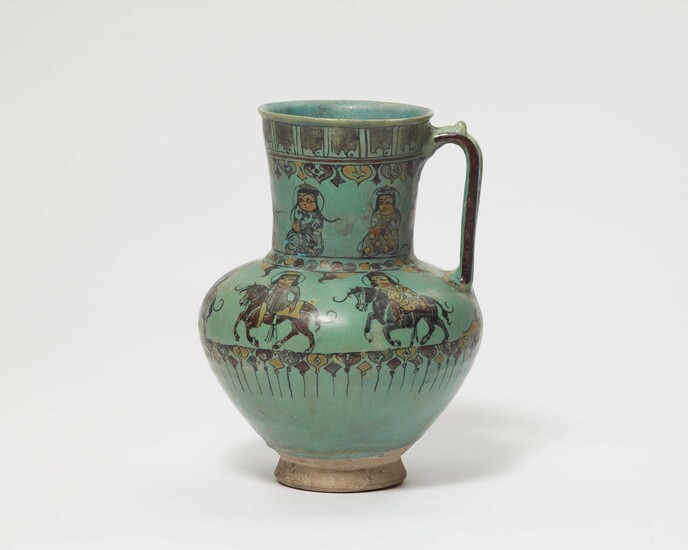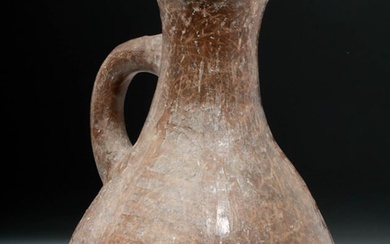An Iranian ceramic jug with horsemen
An Iranian ceramic jug with horsemen
The body decorated with five figures on horseback, the neck with five seated figures separated by colourful borders. With a band of Kufic calligraphy around the neck. Unglazed basal ring. Restored. H 19.5 cm.
12th / 13th C.
Mina'i is a modern collector's term for ceramics produced in Iran from the late 12th to early 13th century. The term means “enamelled” in Persian and refers to the coloured glass pigments which were used to produce detailed figural ornamentation on vessels and tiles, that were fixed through multiple firings. The ceramics are especially colourful due to the combination of turquoise and six additional colours. They generally depict figures from courtly life, each shown in a differently decorated and here exceedingly finely painted robe, whereas the poses and facial features appear more schematic.
Provenance
Family ownership, Hamburg.
From the collection of an engineer for construction machinery, active in Iran and Syria in the 1960s and 1970s.
Literature
Cf. a dish in the Waltes Art Museum Baltimore, acc.no. 48.1079.
For this border cf. A dish in the Metropolitan Museum of Art, New York, acc.no. 1975.1.1642.
View it on
Sale price
Estimate
Time, Location
Auction House
An Iranian ceramic jug with horsemen
The body decorated with five figures on horseback, the neck with five seated figures separated by colourful borders. With a band of Kufic calligraphy around the neck. Unglazed basal ring. Restored. H 19.5 cm.
12th / 13th C.
Mina'i is a modern collector's term for ceramics produced in Iran from the late 12th to early 13th century. The term means “enamelled” in Persian and refers to the coloured glass pigments which were used to produce detailed figural ornamentation on vessels and tiles, that were fixed through multiple firings. The ceramics are especially colourful due to the combination of turquoise and six additional colours. They generally depict figures from courtly life, each shown in a differently decorated and here exceedingly finely painted robe, whereas the poses and facial features appear more schematic.
Provenance
Family ownership, Hamburg.
From the collection of an engineer for construction machinery, active in Iran and Syria in the 1960s and 1970s.
Literature
Cf. a dish in the Waltes Art Museum Baltimore, acc.no. 48.1079.
For this border cf. A dish in the Metropolitan Museum of Art, New York, acc.no. 1975.1.1642.




